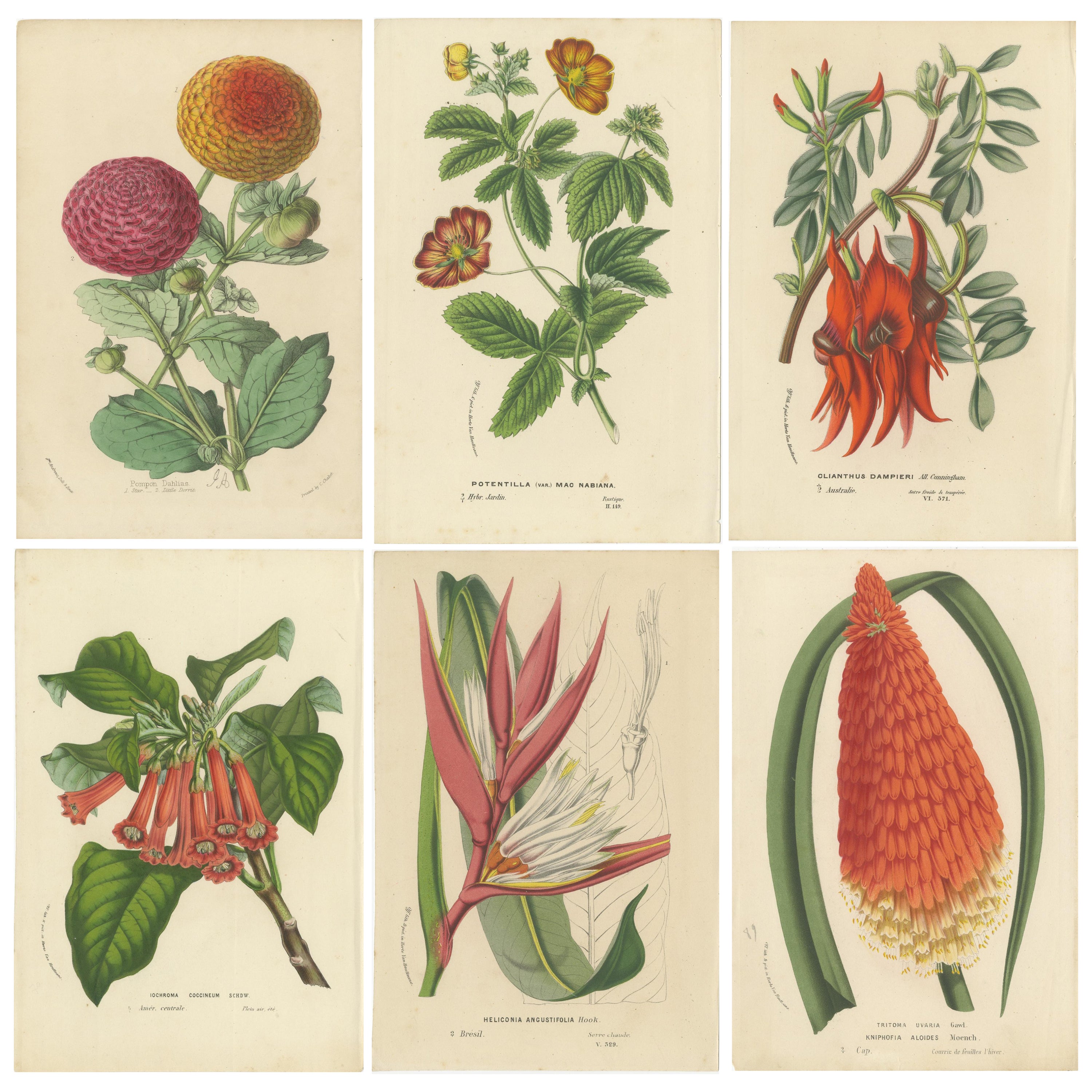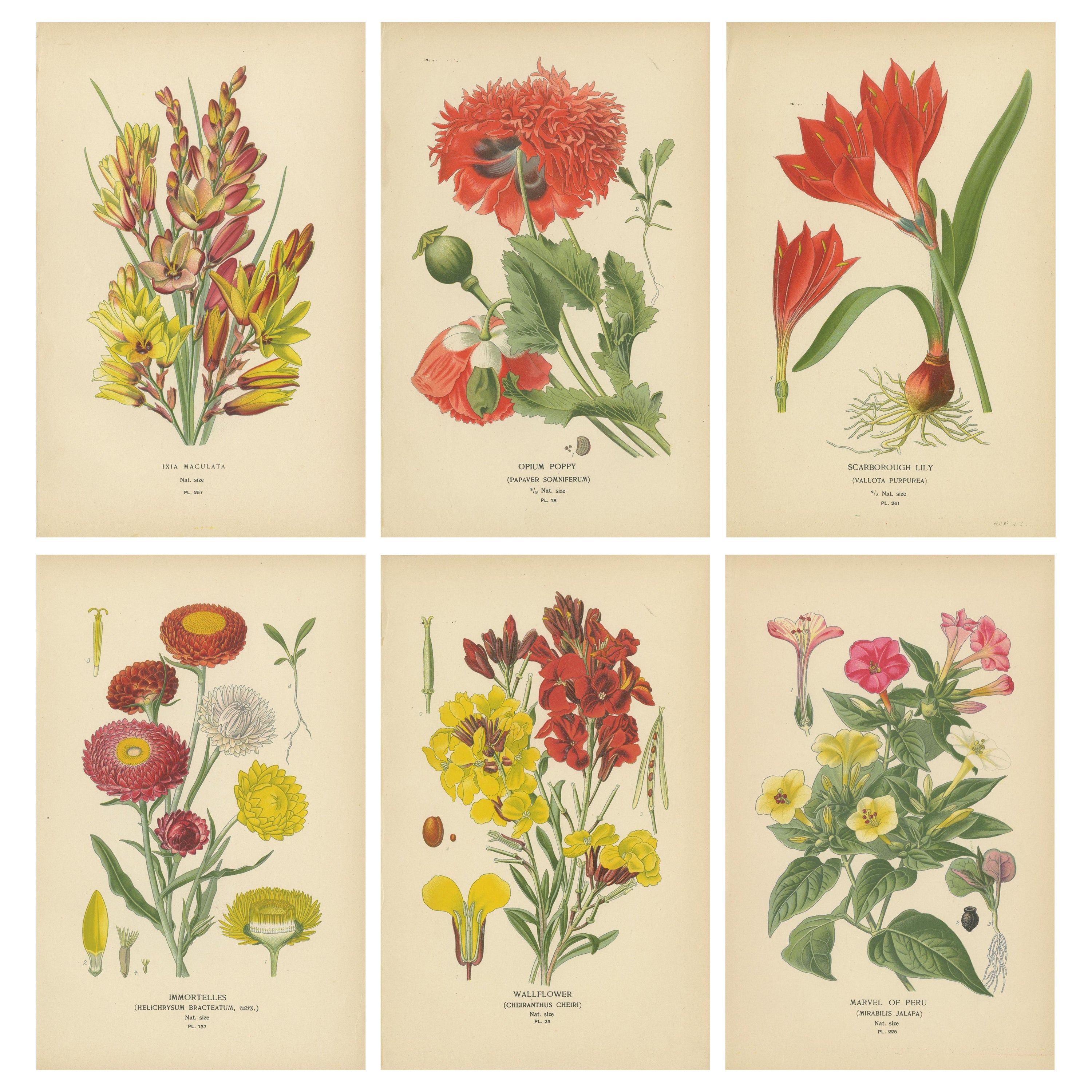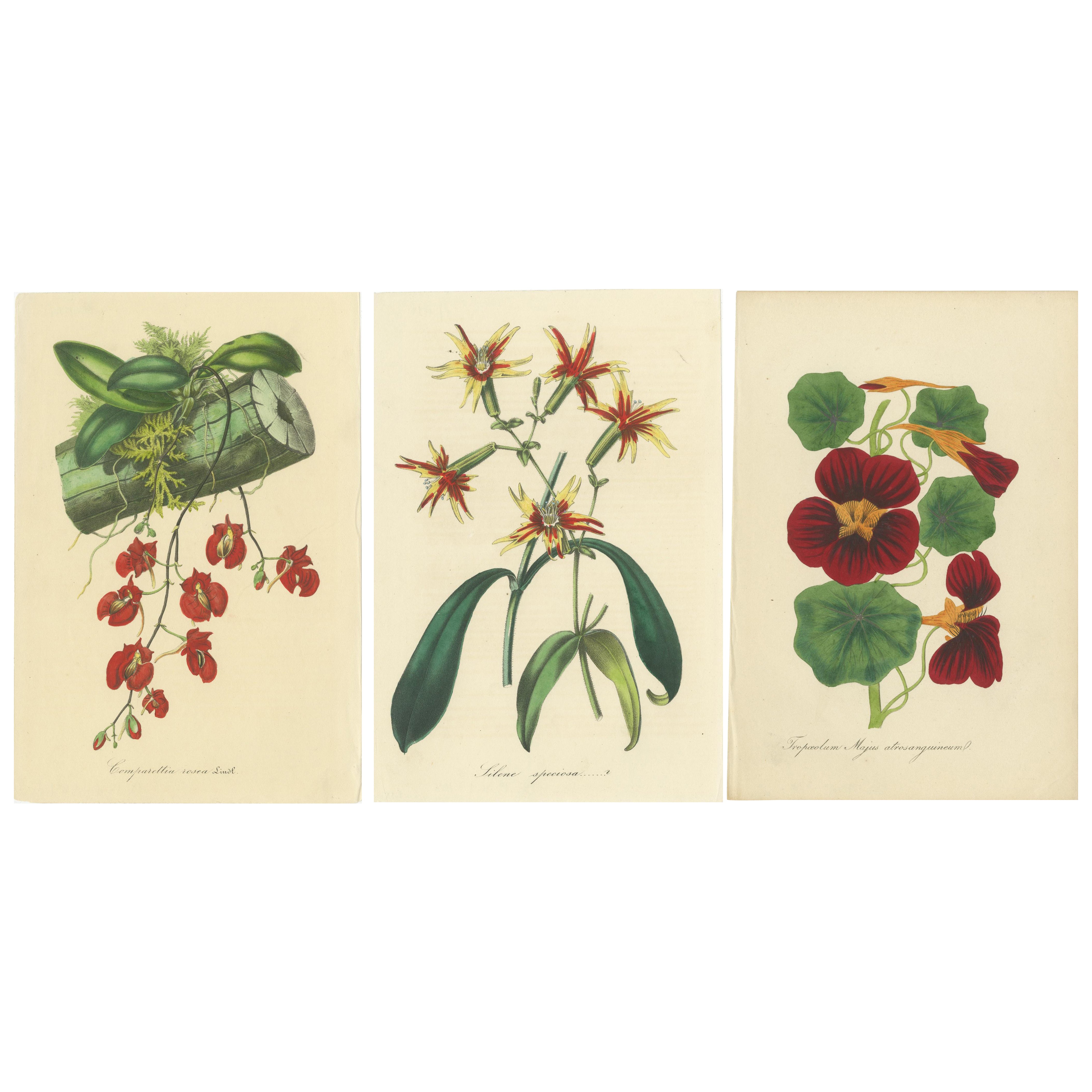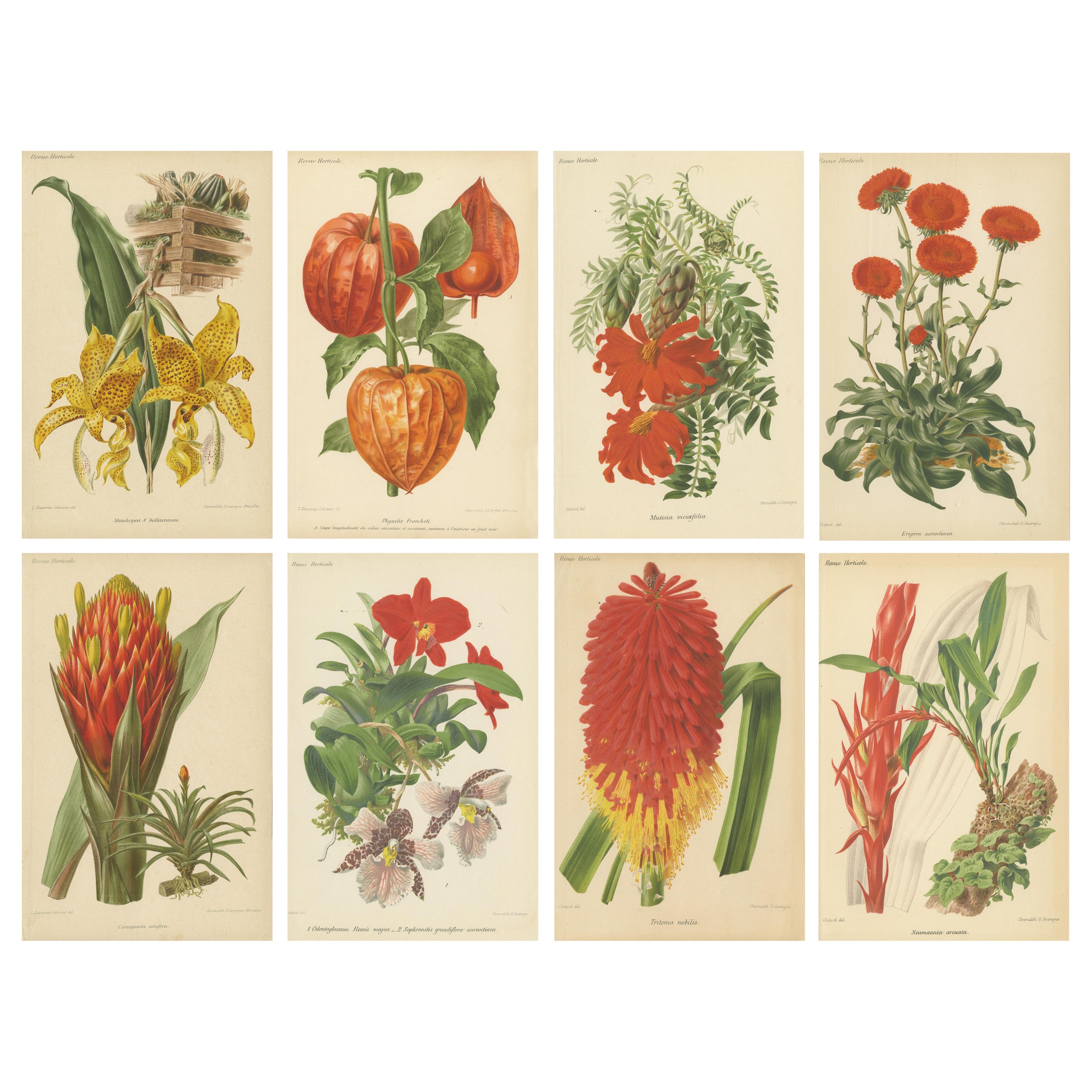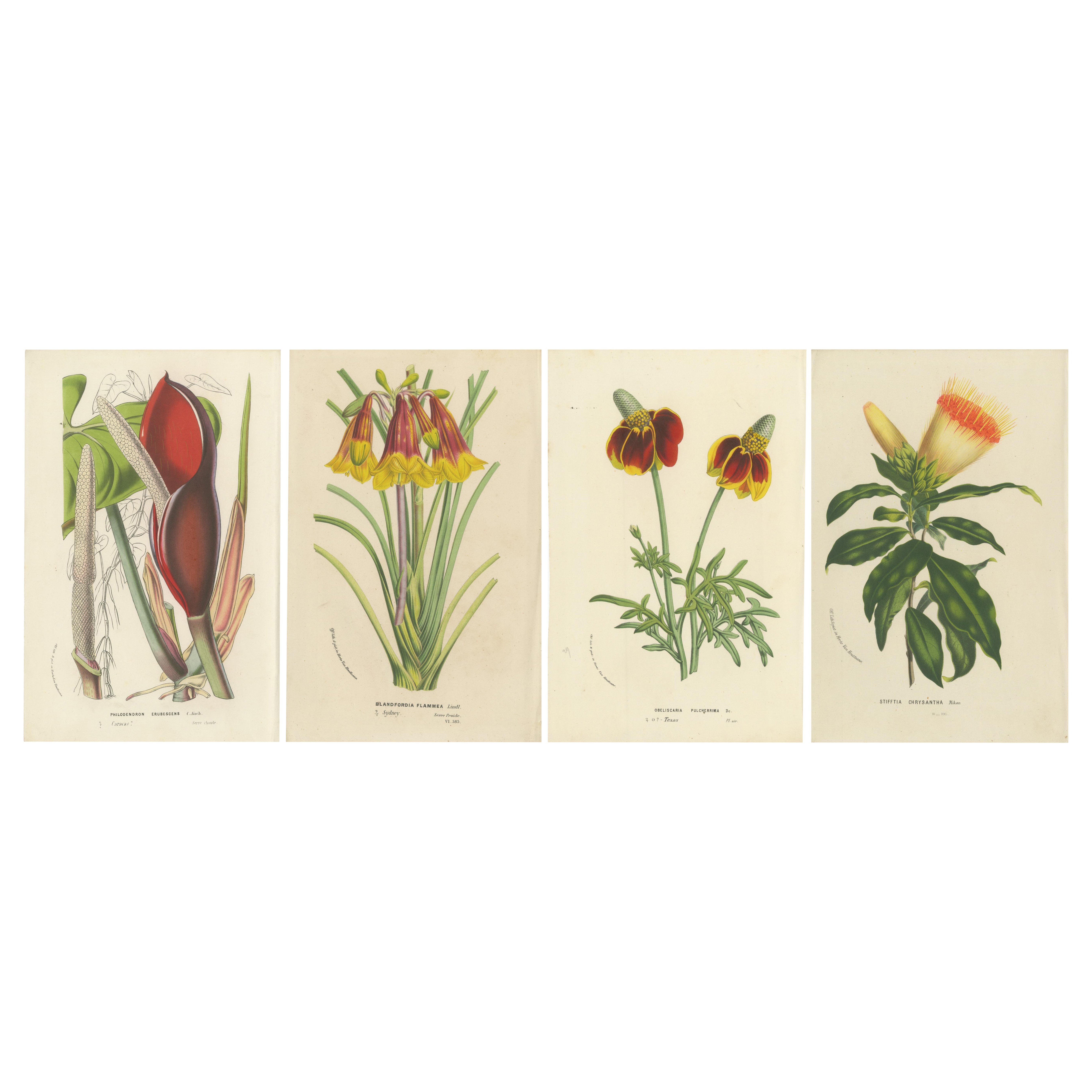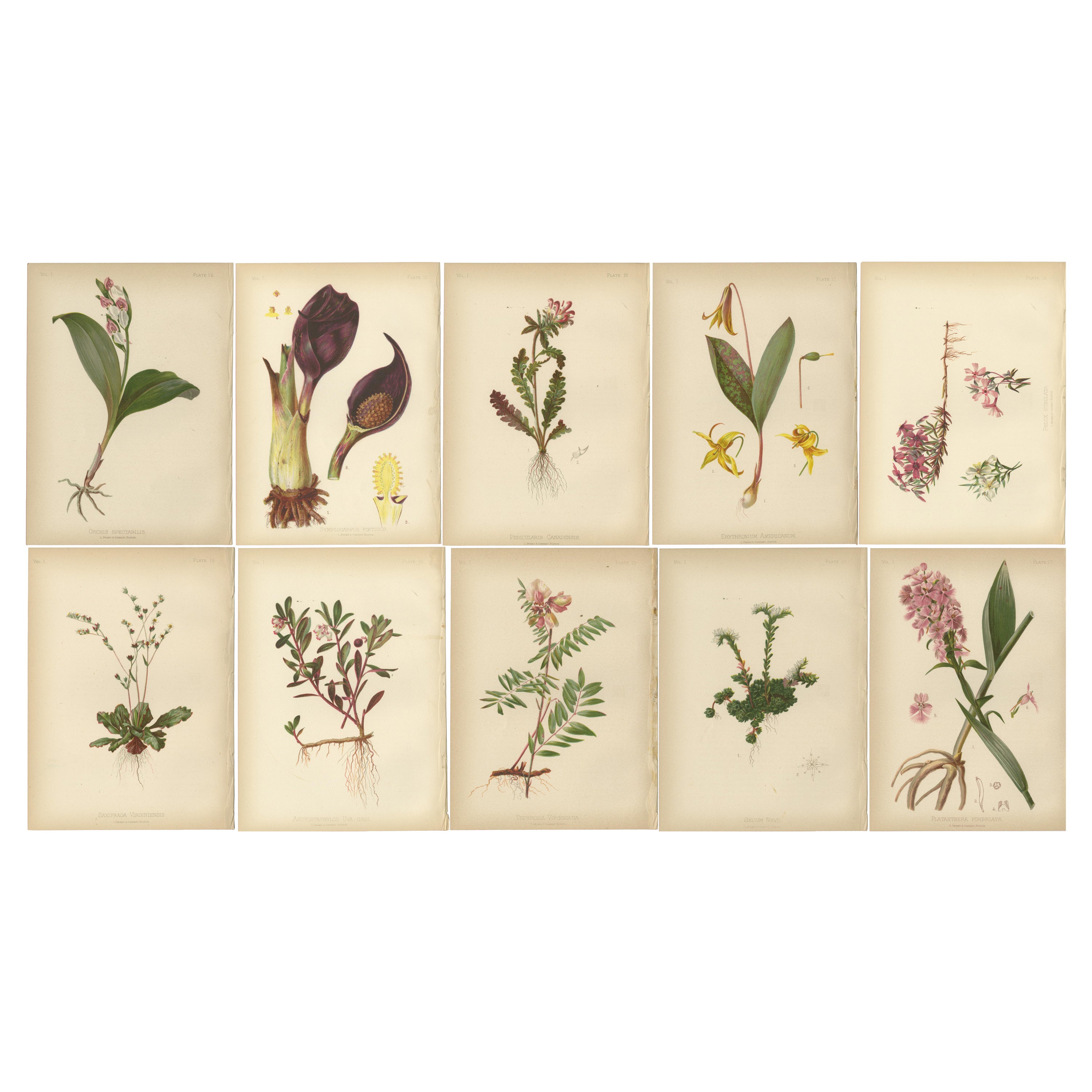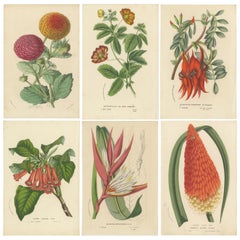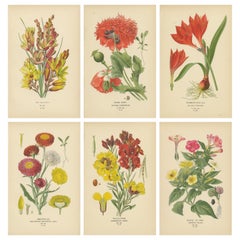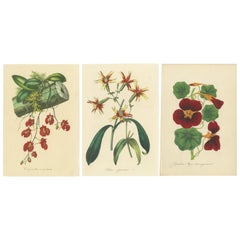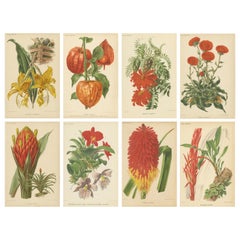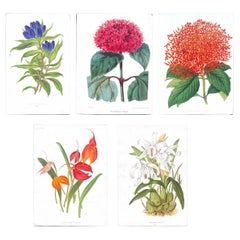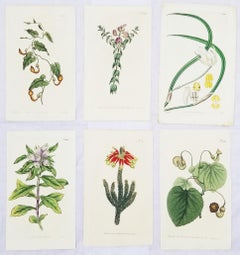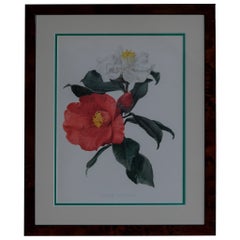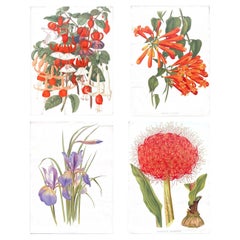Items Similar to Exquisite Flora: A Chromolithographic Collection from the Revue Horticole, 1855
Want more images or videos?
Request additional images or videos from the seller
1 of 8
Exquisite Flora: A Chromolithographic Collection from the Revue Horticole, 1855
$516.51per set
$645.63per set20% Off
£382.37per set
£477.96per set20% Off
€432per set
€540per set20% Off
CA$714.72per set
CA$893.39per set20% Off
A$787.96per set
A$984.95per set20% Off
CHF 412.23per set
CHF 515.29per set20% Off
MX$9,666.77per set
MX$12,083.46per set20% Off
NOK 5,189.21per set
NOK 6,486.51per set20% Off
SEK 4,852.73per set
SEK 6,065.91per set20% Off
DKK 3,290.71per set
DKK 4,113.39per set20% Off
About the Item
These original antique prints are beautiful examples of botanical illustrations featuring tropical plants, drawn with precise detail and coloration. The Latin and English names of the plants are provided in the prints themselves, along with additional botanical information.
Descriptions of the Prints:
1. **Print 1: Vriesea Mariae and Vriesea Alberti**
- **Latin Name**: *Vriesea Mariae* and *Vriesea Alberti*
- **Common Name**: Vriesea (a genus within the Bromeliad family)
- **Special Features**: Vriesea plants are known for their vivid, ornamental foliage and striking floral displays. These particular species have a combination of red and green bracts, making them visually captivating. They are native to tropical rainforests, thriving in humid and shaded environments. Their unusual leaf arrangement helps collect water, which they use to sustain themselves.
2. **Print 2: Anthurium Lawrenceanum**
- **Latin Name**: *Anthurium Lawrenceanum*
- **Common Name**: Anthurium or Flamingo Flower
- **Special Features**: The large, vibrant red spathe with a spadix makes this Anthurium variety a favorite ornamental plant. It is native to tropical regions in Central and South America. The plant is admired for its heart-shaped leaves and unique flowers that can bloom all year round, providing a lasting visual impact in any garden.
3. **Print 3: Nouveau Anthuriums Hybrides**
- **Latin Name**: *Anthurium hybrids* (featuring two varieties: *Prince Léos Radziwill* and *Princesse Lise Radziwill*)
- **Common Name**: Anthurium Hybrids
- **Special Features**: This print illustrates hybrid Anthurium varieties, displaying a rich red hue on one flower and a paler pink on the other. Hybrid Anthuriums have been selectively bred for more intense coloration and prolonged flowering. This makes them popular in floriculture and as indoor plants.
4. **Print 4: Philodendron Erubescens**
- **Latin Name**: *Philodendron Erubescens*
- **Common Name**: Red-leaf Philodendron
- **Special Features**: This species is a climbing plant with dark, glossy leaves and reddish stems. It is highly valued for its ability to thrive in low-light conditions, making it an ideal houseplant. The unusual coloration and structure of the flower add an exotic appeal to the plant, particularly its deep red spathe.
5. **Print 5: Caraguata Splendens**
- **Latin Name**: *Caraguata Splendens* (now more commonly referred to as *Vriesea splendens*)
- **Common Name**: Flaming Sword Plant
- **Special Features**: This Bromeliad is distinguished by its striking sword-like flower spike, which is fiery red with yellow accents. The plant also has banded leaves with a unique striped pattern, making it a popular ornamental in both gardens and as an indoor plant. Native to tropical regions of South America, it is a favorite among plant collectors for its hardiness and dramatic visual appeal.
6. **Print 6: Anthurium Crombezianum**
- **Latin Name**: *Anthurium Crombezianum*
- **Common Name**: Anthurium (specific cultivar or species)
- **Special Features**: Like other Anthuriums, this species features bold, leathery leaves and a large spadix, surrounded by a vivid red spathe. These plants are valued for their air-purifying properties and long-lasting flowers, making them popular in floral arrangements.
Why These Plants Are Special or Interesting:
- **Aesthetic Appeal**: These tropical plants are often prized for their vivid colors, exotic shapes, and the unique way they flower, often forming long-lasting bracts or spathes.
- **Tropical Origin**: Most of these species come from tropical rainforests, making them a rarity in colder climates and a symbol of exotic beauty.
- **Ornamental Use**: They are extensively used in horticulture and interior decoration due to their vibrant appearance and relatively easy care. Many of these plants are epiphytes, meaning they grow on other plants and trees in their native habitats.
- **Botanical Importance**: The ability of these plants to survive in different environments has fascinated botanists and collectors alike, making them highly valued in both botanical studies and private collections.
Maker of the Prints:
The prints were made by renowned botanical illustrators **P. de Longpre**, **Godart**, **L. Descamps-Sabouret**, and **G. Severyns**, based on the chromolithographic process.
- **P. de Longpre**: A celebrated artist and botanical illustrator, known for his precision and detail in depicting flora.
- **Godart**: Another skilled botanical artist contributing to the field of scientific illustration during the same period.
- **L. Descamps-Sabouret**: A well-known illustrator, with a particular focus on hybrid plants and cultivars.
- **G. Severyns**: One of the foremost chromolithographers of his time, Severyns was instrumental in producing highly detailed, multi-colored prints.
Technique Used - Chromolithography:
These original antique prints were created using the **chromolithography** technique, which was an advanced method of color printing developed in the 19th century. This process allowed artists to produce vibrant, multi-color prints by applying layers of color ink using stones, one for each color.
- Chromolithography was valued for its ability to replicate complex botanical illustrations with remarkable accuracy. The process was slow and required high craftsmanship, as each color had to be applied separately, resulting in detailed and richly colored images.
- This technique was revolutionary for the time and used primarily for high-end scientific illustrations, making these prints not just artistic but also scientifically significant.
These works were likely published in Revue Horticole, a prominent 19th-century horticultural journal, which often featured botanical prints of newly discovered or hybridized plant species. These illustrations were essential for educating horticulturists and botanists about plant morphology and helped spread knowledge about tropical flora.
- Dimensions:Height: 9.85 in (25 cm)Width: 6.3 in (16 cm)Depth: 0 in (0.02 mm)
- Sold As:Set of 6
- Materials and Techniques:
- Period:
- Date of Manufacture:circa 1855
- Condition:Condition: Very good, given age. General age-related toning and/or occasional minor defects from handling. Please study scan carefully.
- Seller Location:Langweer, NL
- Reference Number:Seller: BG-13761,-117 BG-13761-118, etc1stDibs: LU3054341456362
About the Seller
5.0
Recognized Seller
These prestigious sellers are industry leaders and represent the highest echelon for item quality and design.
Platinum Seller
Premium sellers with a 4.7+ rating and 24-hour response times
Established in 2009
1stDibs seller since 2017
2,613 sales on 1stDibs
Typical response time: <1 hour
- ShippingRetrieving quote...Shipping from: Langweer, Netherlands
- Return Policy
Authenticity Guarantee
In the unlikely event there’s an issue with an item’s authenticity, contact us within 1 year for a full refund. DetailsMoney-Back Guarantee
If your item is not as described, is damaged in transit, or does not arrive, contact us within 7 days for a full refund. Details24-Hour Cancellation
You have a 24-hour grace period in which to reconsider your purchase, with no questions asked.Vetted Professional Sellers
Our world-class sellers must adhere to strict standards for service and quality, maintaining the integrity of our listings.Price-Match Guarantee
If you find that a seller listed the same item for a lower price elsewhere, we’ll match it.Trusted Global Delivery
Our best-in-class carrier network provides specialized shipping options worldwide, including custom delivery.More From This Seller
View AllExotic Blooms: A Collection of 19th-Century Chromolithographs, Published in 1875
Located in Langweer, NL
The following six chromolithographs are botanical prints from a collection illustrated by Louis Benoît Van Houtte.
Louis Benoît Van Houtte was a prominent Belgian horticulturist and...
Category
Antique 1870s Prints
Materials
Paper
$564 Sale Price / set
20% Off
Floral Treasures: 19th-Century Chromolithographs from the Botanical Collection
Located in Langweer, NL
The following six chromolithographs are part of a collection published in 1896, created by Désiré Bois and Edward Step. They illustrate botanical subjects with remarkable attention t...
Category
Antique 1890s Prints
Materials
Paper
$516 Sale Price / set
20% Off
Vibrant Botanical Chromolithographs: A Showcase of Exotic Blooms, 1875
Located in Langweer, NL
The following botanical prints are from a collection illustrated by Louis Benoît Van Houtte.
Louis Benoît Van Houtte was a prominent Belgian horticulturist and nurseryman. He publis...
Category
Antique 1870s Prints
Materials
Paper
$315 Sale Price / set
20% Off
Original Vintage Botanical Illustrations from Revue Horticole, circa 1855
Located in Langweer, NL
Here are descriptions of the eight botanical illustrations, including the Latin and English names of the plants, why they are significant, and details about the creators and the tech...
Category
Antique 1850s Prints
Materials
Paper
$640 Sale Price / set
20% Off
Flora Illustrated: A Collection of 19th Century Botanical Art, Published c.1875
Located in Langweer, NL
The prints depict various botanical species, each illustrated with detailed attention to the morphology of the plants, including leaves, flowers, and sometimes fruits or seeds. These...
Category
Antique 1870s Prints
Materials
Paper
$325 Sale Price / set
20% Off
Native US Flora - Ten Original Botanical Chromolithograps, 1879
Located in Langweer, NL
The image displays a collection of tten chromolithographs depicting various plant species. These illustrations are characterized by their botanical accuracy and aesthetic appeal, typ...
Category
Antique 1870s Prints
Materials
Paper
$860 Sale Price / set
20% Off
Free Shipping
You May Also Like
Bignonia venusta – Antique Botanical Chromolithograph, 1880s
Located in Fukuoka, JP
A striking original botanical print from the 1880s, featuring Bignonia venusta, also known as flame vine or orange trumpet vine. This brilliantly colored illustration captures the dr...
Category
Antique 19th Century French Prints
Materials
Paper
Set of Six Hand-Colored Engravings from Curtis's Botanical Magazine /// Botany
By William Curtis
Located in Saint Augustine, FL
Artist: William Curtis (English, 1746-1799)
Title: Set of Six Hand-Colored Engravings
Portfolio: The Botanical Magazine; or, Flower-Garden Displayed
Year: 1796-1829 (First-third seri...
Category
1790s Victorian Still-life Prints
Materials
Watercolor, Engraving, Intaglio
Botanical Chromolithographs from: William Robinson's Flora & Sylva
Located in Kettering, GB
A collection of 16 original botanical chromolithograph print in colours from William Robinson’s 1903-1905 Flora & Sylva – A Monthly Review....
Category
Early 20th Century British Decorative Art
Materials
Paper
Original 1880s Botanical Print of Hæmanthus Kalbreyeri — Vibrant Antique Chromol
Located in Fukuoka, JP
A striking original chromolithograph from the 1880s, this botanical print features the dramatic Hæmanthus kalbreyeri, also known as the blood lily. Characterized by its intense red s...
Category
Antique 19th Century French Prints
Materials
Paper
Set of Two Rare Botanical Engravings by D’Orbigny — 1849
Located in Fukuoka, JP
Set of Two Rare Botanical Engravings by D’Orbigny — Dictionnaire Universel d’Histoire Naturelle, Paris, 1849
An exquisite pair of original hand-colored botanical engravings from the...
Category
Antique 19th Century French Prints
Materials
Paper
Set of Six Hand-Colored Engravings from Curtis's Botanical Magazine /// Botany
By William Curtis
Located in Saint Augustine, FL
Artist: William Curtis (English, 1746-1799)
Title: Set of Six Hand-Colored Engravings
Portfolio: The Botanical Magazine; or, Flower-Garden Displayed
Year: 1794-1812 (First-second ser...
Category
1790s Victorian Still-life Prints
Materials
Watercolor, Engraving, Intaglio
